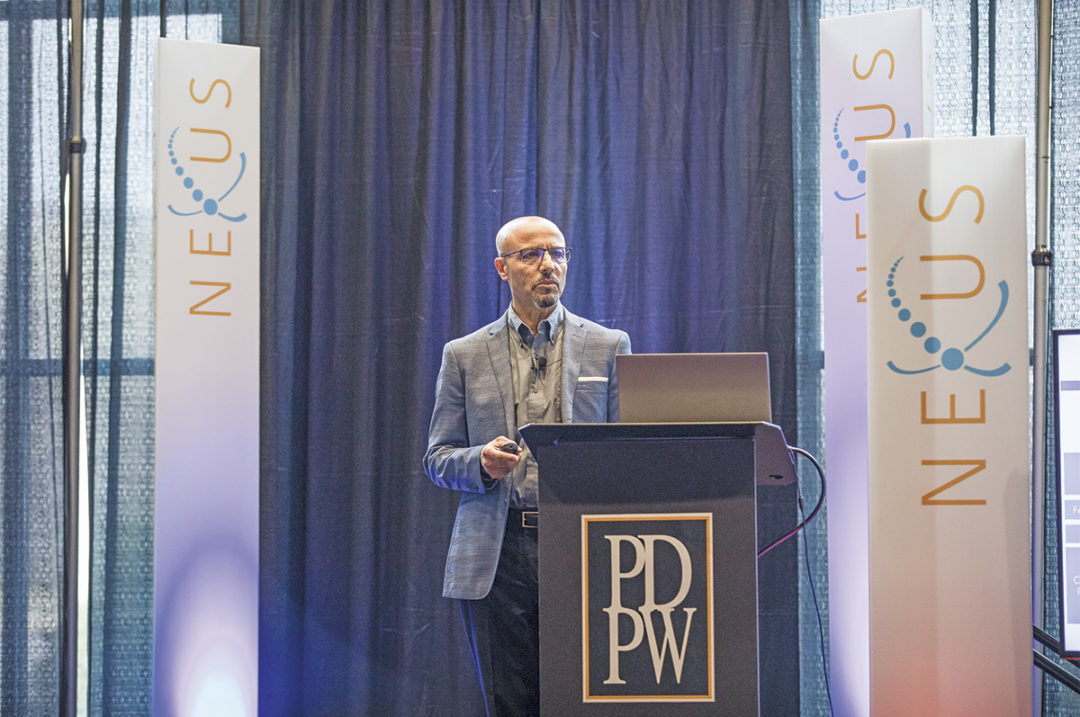A cutting-edge new feed additive from Quality Technology International (QTI) represents the most significant advancement in prebiotics to come forward in the past two decades. The new product has increased capability to bind gram-negative pathogens like E. coli and salmonella. In fact, it’s 10 times more effective than the current go-to solution of products. It’s the only feed additive currently patented for inhibition of salmonella colonization in livestock and poultry.
To combat salmonella and other gram-negative pathogens, producers presently turn to functional carbohydrates that are based on mannan-oligosaccharides (MOS). The new cutting-edge prebiotic from QTI, called MCM, consists of much shorter oligosaccharides. Its key functional mannose-based chains of MCM range in length from two to five residues to as short as even one residue. It’s the shorter β-1,4-mannobiose in MCM that makes the product more effective than MOS.
“MCM has been developed to help with exposure to pathogens, particularly gram-negative, enteric pathogens,” says Dr. Miloud Araba, vice president of animal health and nutrition for QTI. “You would feed it when you have a lot of exposure to, say, E. coli or salmonella, or during times of stress. We all know there are times of a lot of stress in animal production.”
Created with advanced and controlled enzymatic processing that breaks oligosaccharide chains into much shorter two- to five-unit segments, MCM amplifies the number of functional mannose ends that can interact with bacteria, immune cells and intestinal surfaces. It's the difference between having just two functional ends on a long- or medium-chain oligosaccharide versus dozens of functional ends on the bite-sized MCM fragments.
“If you picture in your mind a mannan-oligosaccharide as a chain, at each end of that chain is a mannose. When you are binding pathogens, that’s the functional site for binding. So if you have one long chain, or even a medium chain, you have just two sites for binding. But when you chop that chain into smaller pieces, you get a lot more and shorter chains each with a functional mannose at the end. That’s what we’ve done with this product, and that’s what multiplies its functionality.”
The real magic with the new product happens because of one particular two-mannose fragment called β-1,4-mannobiose.
This disaccharide fragment has special properties. It not only binds pathogens (a reactive response) – it also primes the cow’s innate immune system to a heightened state of vigilance (a preventative response).
"It primes the immune system. It gets all those macrophages, those soldiers if you will, primed and ready in case pathogens come in, so the animal is ready to respond,” Araba says.
Araba says that inflammation is a cow’s natural response to a foreign pathogen. But if the inflammation response is too big, or it goes uncontrolled and becomes chronic, it can have detrimental effects on animal health and milk production. In youngstock, uncontrolled inflammation can hamper growth.
The product regulates the cow’s innate immune defense system so it’s prepared but not overstimulated. That leads to sustained milk production when pathogen exposure is a risk factor. The β-1,4-mannobiose also moderates excessive inflammation from bacterial infections, preventing chronic issues.
MCM's multipronged modes of action bind pathogens to prevent colonization, prime the innate immune system for a rapid response and modulate inflammation levels to avoid chronic issues.
Because of these complementary effects, dairy producers can use MCM alone as a functional feed additive or combined with other beneficial ingredients like probiotics or botanicals. MCM is included in the company’s lineup of functional feed additives. Recommended feeding rates for MCM are 5 to 10 grams per cow per day.
With increasing pressure to reduce antibiotic use while maintaining cow health and performance, MCM offers an innovative natural approach. By nutritionally optimizing the animal's own defenses, it can help minimize the production disruptions caused by clinical and subclinical disease challenges.
As a next-generation upgrade to MOS, MCM strikes an ideal balance – fortify the frontline troops to fight off infections while avoiding excessive friendly fire. For dairy producers feeding MCM, that translates into healthier, more productive cows, Araba says.






